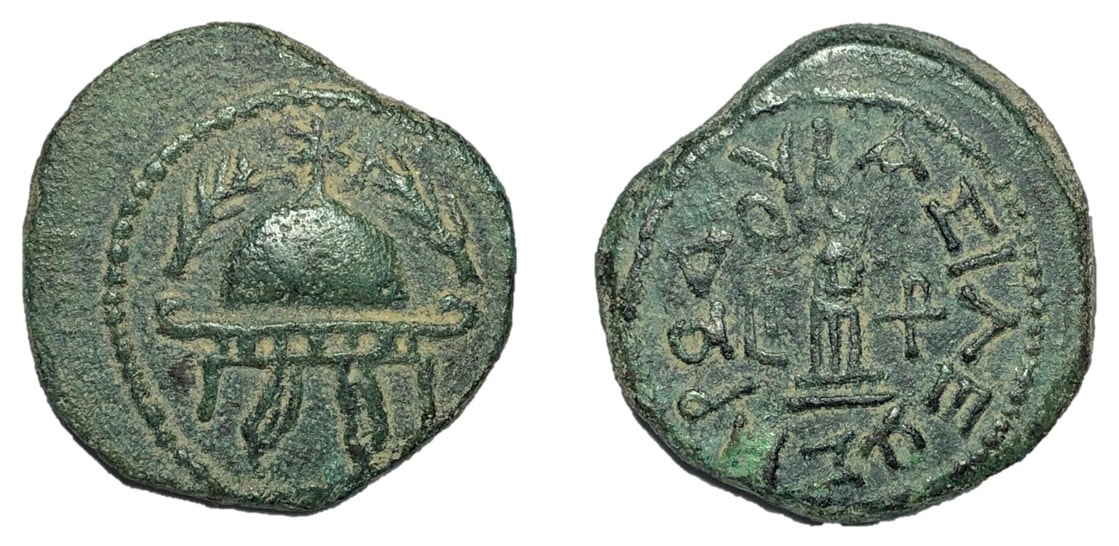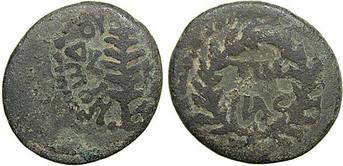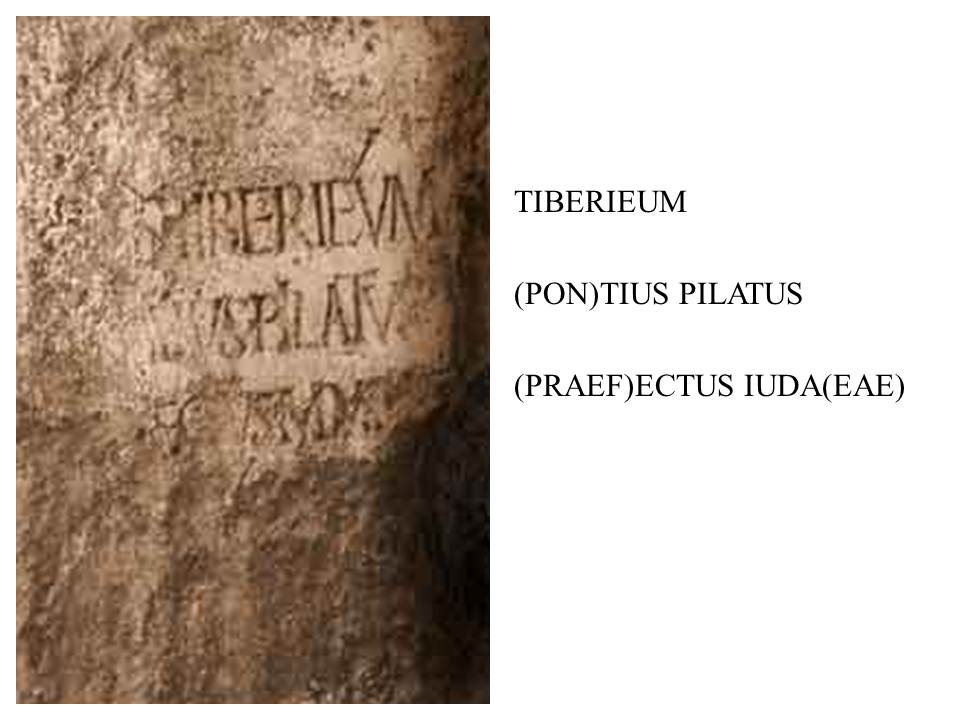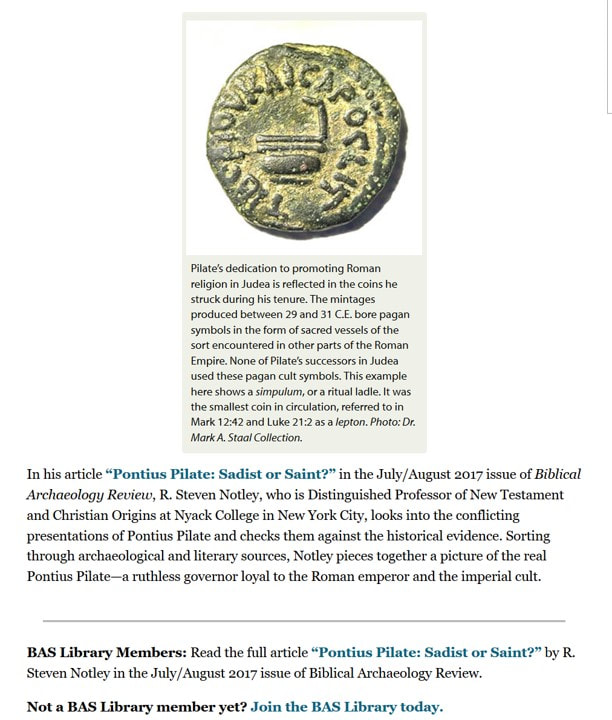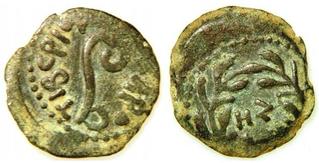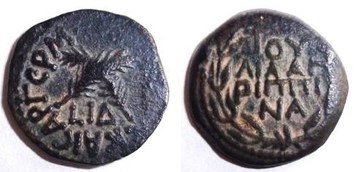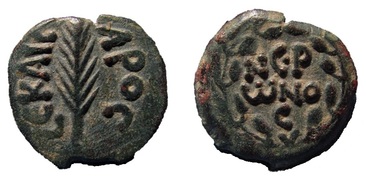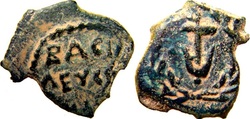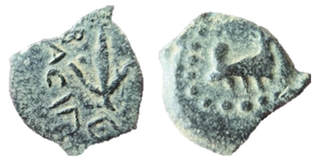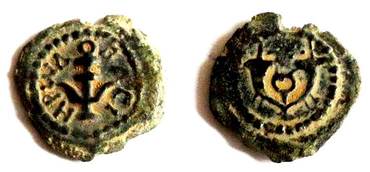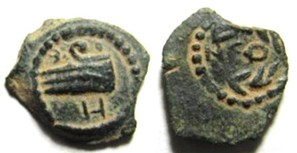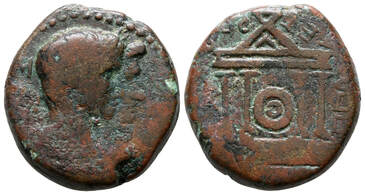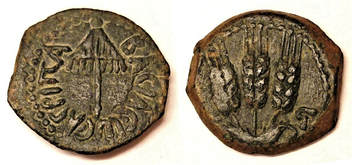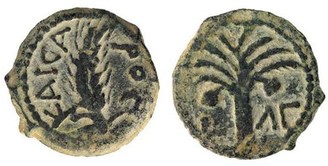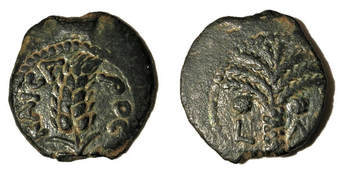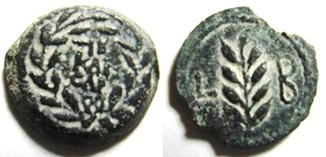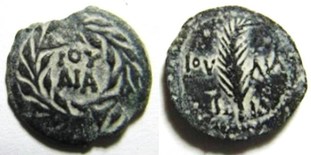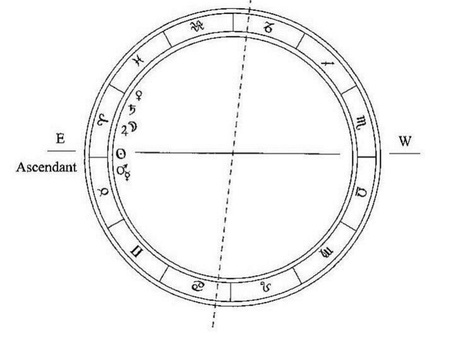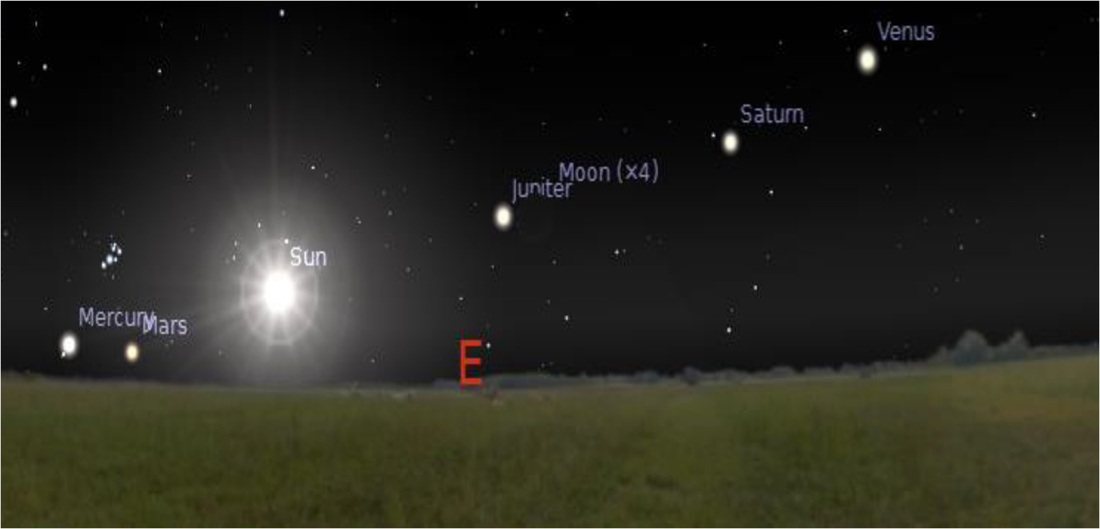Coins of the Herodians and the Roman Procurators of Judea
Herod "the Great"Herod the Great was the Roman client king of Judea. He is perhaps most well-known for his many building projects throughout Judea. These include his expansion of the Second Jewish Temple in Jerusalem, his construction of the port at Caesarea Maritima, the fortress at Masada and the Herodium. He is of course well remembered for his role in the “slaughter of the innocents” after the birth of Jesus and his visit by the wisemen following the star of Bethlehem.
Herod was born ca. 73 BC in Idumea to Antipater the Idumaean, a high-ranking official under ethnarch Hyrcanus II and Cypros (a Nabatean). Antipater was an Edomite (a descendent of Esau) who converted to Judaism. Herod was appointed governor of Galilee in 47 BC while his brother (Phasael) was appointed governor of Jerusalem. Circa 40 BC, Herod is appointed “King of the Jews” by the Roman Senate. Herod Antipas
Herod Antipater (known as Antipas) ruled as tetrarch (ruler of a quarter) over Galilee and Perea. He was responsible for building projects in Sepphoris and construction of his capital in Tiberias.
Antipas divorced his first wife Phasaelis, the daughter of King Aretas IV of Nabatea in favor of Herodias (who was previously married to his half-brother Herod II). According to the New Testament Gospels, it was Antipas who jailed and beheaded John the Baptist. Ultimately, Antipas was accused by his nephew Agrippa I of conspiracy against Caligula at which time he was exiled with Herodias to Gaul (where he died sometime after 39 AD). According to the Gospel of Luke, Jesus was sent to Antipas following his initial interview by Pontius Pilate, only to be returned to Pilate. 
JUDAEA, Herodians
Herod III Antipas
Ӕ Quarter Unit, 15mm, 3.30g.5h.
Tiberias, dated RY 43 = 39/40 CE.
Obv: ΓΑΙΩ ΚΑΙϹΑΡ in three lines
within wreath
Rev: ΗΡΩΔΗϹ ΤΕΤΡΑΡΧΗϹ, bunch
of dates; L-MΓ (date) across field.
Ref: Hendin GBC 6, 6248; Hendin GBC 5,
1217; TJC 93; RPC I 4936.3 (this coin).
ex CNG; Roma 117 lot 549
(formerly Author's collection)
Pontius Pilate (26-36 A.D.)
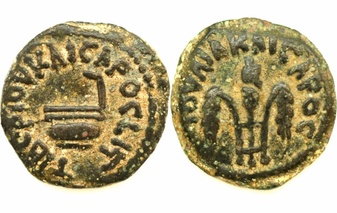
JUDAEA, Procurators.
Pontius Pilate, 26-36 A.D.
Æ Prutah 16mm 2.38g axis 12
(dated RY 16 = 29 A.D.)
Obv: three bound grain ears
IOYΛIA KAICAPOC
Rev: simpulum
TIBЄPIOY KAICAPOC LIς
Ref: Meshorer 331; Hendin 1341 (Author's collection) - This coin featured in Biblical Archaeological Review (July/August, 2017 - see below)
Antonius Felix (52-59 A.D.
Porcius Festus (59-62 A.D.)
Tribute Penny
|
Herod Archelaus
Herod Archelaus was the son of Herod the Great and Malthace (a Samaritan). He was the brother of Herod Antipas and the half-brother of Herod II (Philip). He was ethnarch of Samaria, Judea, and Idumea for nine years (4 BC – 6 AD). He was removed by Augustus at the time of the Census of Quirinius.
Archelaus was married to Mariamne (probably the daughter of Aristobulus IV), whom he later divorced in favor of Glaphyra (widow of Archelaus’ brother Alexander, ex-wife of Juba, king of Mauretania – in violation of Mosaic law). Archelaus is referenced in the Gospel of Matthew (2:13-23) during Joseph and Mary’s return from Egypt and subsequent diversion to Galilee after being warned in a dream by God. As a result, their son Jesus is born in Bethlehem. Herod Philip
Philip the Tetrarch (Herod Philip II) ruled from 4 BC until his death in 34 AD. He was the son of Herod the Great and his fifth wife, Cleopatra of Jerusalem. He was born ca. 19 BC, the half-brother of Herod Antipas and Herod Archelaus. Philip inherited the northeast part of his father's kingdom, which included Iturea and Trachonitis as well as Gaulanitis and Paneas (per Josephus). It is known that Philip the Tetrarch rebuilt the city of Caesarea Philippi, calling it by his own name to distinguish it from the Caesarea (Maritima) on the sea-coast, which was the seat of the Roman government.
Philip married his niece Salome, the daughter of Herodias and Herod II (sometimes called Herod Philip I). Salome appears in the Bible in connection with the execution of John the Baptist (earning her mother’s wish by dancing for Herod Antipas, Philip’s brother). Salome was an estimated 32 years younger than Philip. It is possible that the 'Salome' he was married to was a half-sister by that same name, a daughter of Herod the Great and his 8th wife Elpis. This sibling Salome was born in ca. 14 BC, and so only five years younger than Herod Philip (a more realistic age gap). But this would also be the only known occurrence of the children of Herod the Great intermarrying, even if from different mothers. 
KINGS of ARMENIA MINOR
Aristoboulos, with Salome
AD 54-92. Dated RY 13 (AD 66-7)
Æ 20.1mm, 8.00g, 12h
Obv: BACIΛEΩC APICTOBOYΛOY ET IΓ,
diademed and draped bust of Aristobulus left
Rev: BACIΛIC-CHC CAΛ[O]MHC,
diademed and draped bust of Salome left;
daughter of Herodias, who asked Herod Antipas
for John the Baptist’s head (Matt 14/Mark 6)
Ref: Meshorer 365; Hendin 1257a;
Kovacs 300; RPC I 3840
(formerly Author's collection)
Agrippa I
Herod Agrippa (Agrippa I) was the King of Judea from 41 to 44 AD. He and his son, Herod Agrippa II, were the last kings from the Herodian dynasty. Agrippa I was the grandson of Herod the Great, son of Aristobulus IV and Berenice. He is referenced in the New Testament book of Acts (12:1). Agrippa’s territory comprised Judea, Galilee, Batanaea, and Perea.
Caesonia, with Julia Drusilla
JUDAEA, Caesaraea Paneas. Caesonia, with Julia Drusilla. Augusta, AD 39-41. Æ 18mm Dated RY 5 of Agrippa I (AD 40-1). Draped bust of Caesonia left, wearing hair in long plait; Drusilla standing facing, head right, holding Nike and branch. RPC 4977; Meshorer 117. Extremely rare. (formerly Author's collection)
Jewish Procurator TypesCoponius (6-9 A.D.)
Marcus Ambibulus (9-12 A.D.)
Valerius Gratus (15-26 A.D.)
|
Star of Bethlehem Series
Largely based on the research of Dr. Molnar and Cartwright, the following coin has been identified as representing the Star that appeared over Bethlehem, heralding the birth of Jesus Christ. Ancient writings show that Judea was represented by the Ram Aries in the zodiac and particular positions of the other heavenly bodies represented regal divinity. The first appearance of this astrological sign, according to the work by Molnar and Cartwright, suggest it reached its zenith in Judea on April 17, 6 B.C. On that date, a rare convergence of celestial bodies occurred - Venus, followed by Saturn, the Moon, Jupiter and the sun which were located in Aries.
A series of coins, minted in Antioch, were produced illustrating the same motif at various anniversary dates of the Star's original appearance. Coins were minted on the 25th, 60th, 100th, 125th, 150th, 200th, and 250th year anniversary of Christ's birth and death. The coin below was minted on the 60th anniversary of his birth, coinciding with the 25th anniversary of his crucifixion.

